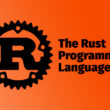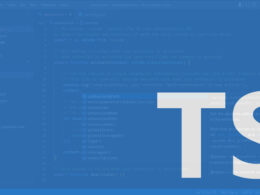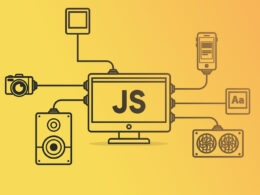Ruby’s Realm: What is Ruby Used For?
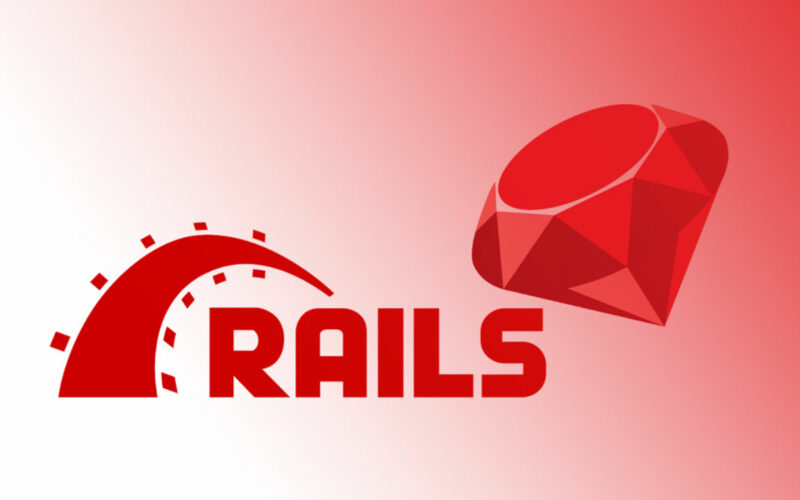
Dazzling innovation unfolds from a gemstone—Ruby. Not the kind to adorn jeweled crowns, but one that weaves the fabric of the digital domain.
Effortlessly malleable and strikingly elegant, Ruby has become synonymous with intuitive software artistry. Shaping ideas into reality, it’s the sculptor’s clay in the cosmos of coding.
Dive deep into the world of Ruby programming—where simplicity mates with power. Behold, as we unravel how this language bends to the creator’s intent, morphing from mere backend development machinery into a vessel for crafting modern digital marvels.
Whether cast into the Ruby on Rails framework, igniting rapid application development, or invoked in scripting that breathes life into the stagnant lines of code, Ruby is a beacon of agility in a sea of complexity.
Prepare to transcend the mundane; this write-up awaits to guide you through the labyrinths of Ruby’s applications. From constructing monumental web architectures to automating the whisper of a task, you will emerge enlightened on Ruby’s vast kingdom.
By the close, not only will the enigma of ‘what is Ruby used for’ cease to exist, but you’ll also find its lore etched within your mind, ready to kindle software engineering aspirations.
What is Ruby Used For?
Ruby is primarily used for web development, notably through the Rails framework, which simplifies and accelerates the creation of web applications. Additionally, Ruby is employed in data processing, prototyping, and automation tasks due to its easy-to-read syntax and robust community support.
| Use Case | Features | Example Gems/Projects | Scalability & Support |
|---|---|---|---|
| Web Dev | MVC, ORM, Conventions | Basecamp, GitHub | Scalable with background jobs, caching |
| API Dev | Serialization, Versioning, Auth | Twitter API, Groupon API | Load balancing, extensive community support |
| E-Commerce | Payment & Product Mgmt | Shopify, Spree, Solidus | Horizontal scaling, optimized queries |
| Content Mgmt | Editing, Theming, SEO | RefineryCMS, ComfortableMexicanSofa | Caching, database indexing |
Ruby’s Development History
Creation and Evolution
Let’s rewind time a bit. Picture this: it’s the mid-90s, and Yukihiro “Matz” Matsumoto, a computer scientist from Japan, decides it’s high time the world had a more human-friendly programming language.
Enter Ruby.
Created with a vision to blend the best of languages like Perl, Smalltalk, Eiffel, Ada, and Lisp, Ruby was born.
It was all about making coding fun and easy for developers. Think of it as the Swiss Army knife of programming languages – versatile, efficient, and oh-so-easy to use.
But what is Ruby used for, exactly? It started as Matz’s brainchild to simplify coding, but it grew into something much bigger.
A community-driven language, evolving with contributions from coders worldwide. Ruby’s dynamic nature and object-oriented architecture meant it could handle almost any programming task thrown its way.
Ruby on Rails
Introduction and Impact on Ruby’s Popularity

Now, fast-forward to 2005. That’s when Ruby really hit the big leagues. Why? Two words: Ruby on Rails. This full-stack web development framework turned Ruby into a superstar.
It made building complex, database-driven web applications a breeze. The ‘Convention over Configuration’ philosophy of Rails meant less time configuring, more time creating.
Ruby on Rails didn’t just revolutionize web development; it skyrocketed Ruby’s popularity.
Suddenly, everyone wanted in on the action. Startups to big enterprises, they all saw the magic of Ruby.
Major Websites Using Ruby on Rails
You might be thinking, “Okay, but what is Ruby used for in the real world?” Well, how about some name-dropping?
Think: GitHub, Shopify, Airbnb.
These tech giants built their platforms with Ruby on Rails. They leveraged its agility, its robustness, and its sheer coding elegance to create websites we can’t live without.
And here’s the kicker: these aren’t just websites. They’re ecosystems, digital kingdoms built with Ruby’s code.
This just goes to show how Ruby, especially through Rails, isn’t just another programming language. It’s a foundation for digital innovation.
Applications of Ruby
Web Development

Imagine you’re building a digital castle. That’s web development in a nutshell. Now, what is Ruby used for in this realm?
Ruby, especially with Ruby on Rails, is like the magic wand in this process. It helps create websites that are not just functional but also beautifully complex.
Ruby on Rails, this framework, is a game-changer for building database-driven web applications.
It’s like having a blueprint that guides you through the entire building process. It makes sure you’re not lost in the coding woods.
Whether it’s e-commerce sites, social networks, or content platforms, Ruby lays down the red carpet for web developers to strut their stuff.
Ruby on Rails for Database-Driven Web Applications
Here’s where it gets spicy. Ruby on Rails isn’t just any framework. It comes packed with tools that make database integration a walk in the park.
Creating tables, storing data, retrieving it – Ruby on Rails handles it all with a grace that’s almost poetic. And the best part? It’s ridiculously easy to learn and use.
Use in Building Complex Web Applications
Now, let’s talk about the heavyweights – complex web applications. These are not your run-of-the-mill websites.
We’re talking about applications that require a ton of interactivity, real-time features, and data manipulation.
Ruby, with its dynamic typing and object-oriented features, is perfectly equipped to handle these challenges. It’s like having a Swiss Army knife in your coding toolkit.
Static Site Generation
Ruby’s Role in Powering Jekyll

Ever heard of Jekyll? It’s this cool static site generator powered by Ruby. For blogs, personal portfolios, or project documentation, Jekyll turns plain text into static websites and blogs.
No databases, no convoluted backend stuff. Just pure, simple, static goodness. Ruby here works its charm by simplifying the whole process, making site generation as easy as pie.
DevOps and Automation
Ruby’s Utility in Automation Tools and Web App Deployment
Let’s shift gears to DevOps and automation. Ruby is not just about building websites; it’s also about making the lives of developers easier.
Automating repetitive tasks, deploying web applications, scripting those nitty-gritty backend operations – Ruby excels in these areas.
It’s like having an extra pair of hands, doing the heavy lifting for you in the background.
Data Processing
Ruby’s Capabilities in Handling Data Processing Tasks
Data, data everywhere, but not a drop to waste. In the world of big data, Ruby shines as a handy tool for data processing tasks.
Sorting, analyzing, crunching numbers – Ruby takes on these tasks like a pro. It’s not just about handling data; it’s about making sense of it, turning raw numbers into insights and actions.
Web Scraping and Crawling
Use of Ruby in Efficient Data Extraction from Web Pages
Last on the list, but definitely not the least, is web scraping and crawling. Need to extract data from web pages? Ruby’s got your back.
With libraries like Nokogiri, Ruby makes it super simple to dive into web pages, grab the data you need, and make it your own. It’s like being a digital treasure hunter, and Ruby is your trusty map.
Ruby vs. Other Programming Languages
So, you’re wondering what is Ruby used for, especially when stacked against other programming languages? Let’s dive in!
Comparison with Python
Ruby and Python, they’re like the superheroes of the coding world. Both are high-level, easy to read, and super popular. But, like Batman and Superman, they’ve got their unique strengths.
Similarities and Differences in Use Cases and Community Focus
Ruby’s all about making coding elegant and fun. It’s like the artist who makes beautiful code that’s also super practical.
Python, on the other hand, is the scientist. It’s straightforward, aiming for the most efficient way to solve a problem.
While Ruby’s big in web development, thanks to Ruby on Rails, Python’s got a stronghold in data science and machine learning.
Ruby’s community, it’s like a close-knit family. They’re all about refining the language, making it better, and more fun to use.
Python’s community? Massive! They’re super focused on expanding Python’s use, especially in academic and scientific fields.
Frameworks: Ruby on Rails vs. Django
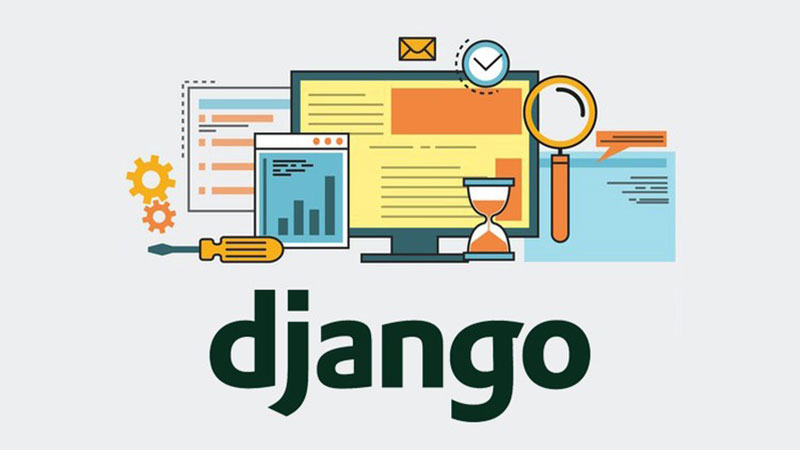
Here’s where the real battle begins. Ruby on Rails vs. Django – the frameworks that define what is Ruby used for and what Python is used for in web development.
Rails is all about getting you up and running quickly, with convention over configuration. Django, with its “batteries-included” approach, is like the Swiss Army knife for web developers.
Both are amazing, but your choice? It depends on your style and what you’re building.
General-purpose vs. High-level Language
Let’s clear something up. Both Ruby and Python are high-level, general-purpose languages. But what does that even mean?
It means they’re both designed to be easy to read and write. They abstract away the complex bits of computer programming, making life easier for us, the coders.
Ruby, with its elegant syntax, is like the poet of the programming world. It’s perfect for those who value creativity and expressiveness in their code.
Python, with its emphasis on simplicity and readability, is like the clear communicator, perfect for those who want to get straight to the point.
Learning and Career Prospects
Diving into the world of coding with Ruby? Let’s talk about what that journey looks like and where it can take you.
Ease of Learning
Accessibility for Beginners
Starting with Ruby is like learning to ride a bike with training wheels. It’s designed to be simple and readable.
The syntax? Super intuitive. For anyone asking, “What is Ruby used for?” it’s like opening a door to a room where everything is labeled clearly.
You don’t need to be a coding wizard to start understanding and writing Ruby code.
Resources for Learning Ruby
The Ruby community is amazing when it comes to resources for learners.
There are heaps of tutorials, guides, and online courses out there. And the best part? Most of them are free! It’s like having a personal tutor, only it’s the entire internet helping you out.
If you’re getting started and want to know more about the best tools for Ruby, this article on the best IDE for Ruby is a great place to start.
Career Opportunities
Demand for Ruby Skills in the Job Market
So, you’ve learned Ruby and are wondering, “What next?” Well, the job market loves Ruby developers.
Why?
Because what is Ruby used for in the industry is diverse – from web development to DevOps, and even in startups looking to build quickly and efficiently.
Ruby skills are in demand, and they open doors to some exciting career paths.
Types of Industries and Companies Using Ruby
It’s not just tech companies and startups that are on the Ruby bandwagon. From e-commerce giants to digital marketing firms, Ruby is used far and wide.
It’s a language that adapts, making it a valuable skill in various industries.
Whether it’s building the next social media platform or a revolutionary e-commerce site, Ruby developers are the architects behind many digital wonders we use every day.
FAQ On What Is Ruby Used For
What is Ruby on Rails?
Ruby’s essence lies in its creation as a high-level, interpretive scripting language. Embraced for the beauty and simplicity it offers to programmers, its primary use is software development. Think of it as the painter’s favored brush, trusted to illustrate bold ideas on the canvas of computers.
Is Ruby Only Related to Web Development?
Far from a one-trick pony, Ruby finds its prowess extending beyond web development. Indeed, its popular framework, Ruby on Rails, is a web development cornerstone, but it’s also utilized for data processing, automation, and even prototyping across various tech fields.
How Does Ruby Stand Out Among Other Languages?
Ruby’s charm is its readability and elegance, favoring the human touch over machine rigidity. Streamlined coding, an object-oriented structure, and a vibrant community set the stage for a language that’s as enjoyable to write as it is powerful to use.
Can Ruby Keep Up with Modern Software Development?
Unquestionably, yes. Modern software development requires flexibility and efficiency—traits woven into Ruby’s DNA. It’s perpetually evolving, with Ruby gems offering modular add-ons, ensuring it remains an enduring ally in the developer’s arsenal.
Where Does Ruby Shine the Most Efficiently?
Ruby truly dazzles in rapid application development, thanks to Ruby on Rails. This allows developers to craft ideas into reality quickly, capitalizing on pre-built structures for databases, web services, and web pages. Efficiency without sacrificing quality is Ruby’s stage to shine.
What Types of Organizations Use Ruby?
From burgeoning startups to tech giants, Ruby’s audience is vast—Amazon, Airbnb, Shopify, to name a few. This universal adaptability stems from its stability and robust scalability, a vital consideration for businesses large and small.
How Does Ruby Facilitate Learning Programming?
Due to its simplicity and expressiveness, Ruby is a gentle yet precise introduction to programming. Newcomers find solace in its clarity, while experts admire the dexterity it affords. It’s a teacher that grows with you, a quality rare in this fast-paced tech world.
In What Ways Does Ruby Interact with Databases?
Ruby forms a harmonious relationship with databases through ActiveRecord, part of the Ruby on Rails framework. Offering an intuitive way to retrieve, manipulate, and store data, it simplifies transactions with databases as varied as MySQL, PostgreSQL, and SQLite.
Does Ruby Support Mobile App Development?
While not its primary calling, Ruby enters the mobile domain via frameworks like RubyMotion which allow the creation of cross-platform mobile apps. It’s a testament to Ruby’s adaptability, catering to the mobile surge without skipping a beat.
How Does the Future Look for Ruby?
Vibrant and promising. With Ruby 3×3 focusing on performance, concurrency, and typing, Ruby is poised to pierce through the evolving tech landscape. Each iteration is a step towards more seamless, efficient, and exquisite craftsmanship in the world of programming.
Conclusion
In the intricate dance of web blues and hues, one may pause and wonder, what is Ruby used for?
We’ve journeyed through the rich tapestry of Ruby’s nuances—from weaving the silken threads of backend development to orchestrating the grand ballet of web applications with Ruby on Rails.
This gem, a treasure trove, equips craftsmen with tools apt for sculpting digital legacies—articulating the language of machines with human poise.
It’s the brushstroke in the masterpiece, the invisible gears turning the mammoth wheel of e-commerce, social platforms, and information hubs.
As lights dim on this exposition, let it be known—Ruby’s narrative is storied and ongoing, a timeless ode to creativity and function.
It’s a language that embraces change, empowers innovation, and endears with its elegant simplicity. For architects of the virtual world, Ruby is not merely a tool; it is a steadfast companion through the unfurling scroll of technological evolution.
- Design Digitally: Graphic Design Apps Like Adobe Illustrator - May 4, 2024
- Unlocking Efficiency: Top CSS Generators To Try - May 4, 2024
- What Is Rust Used For? A Guide to Its Applications - May 4, 2024



